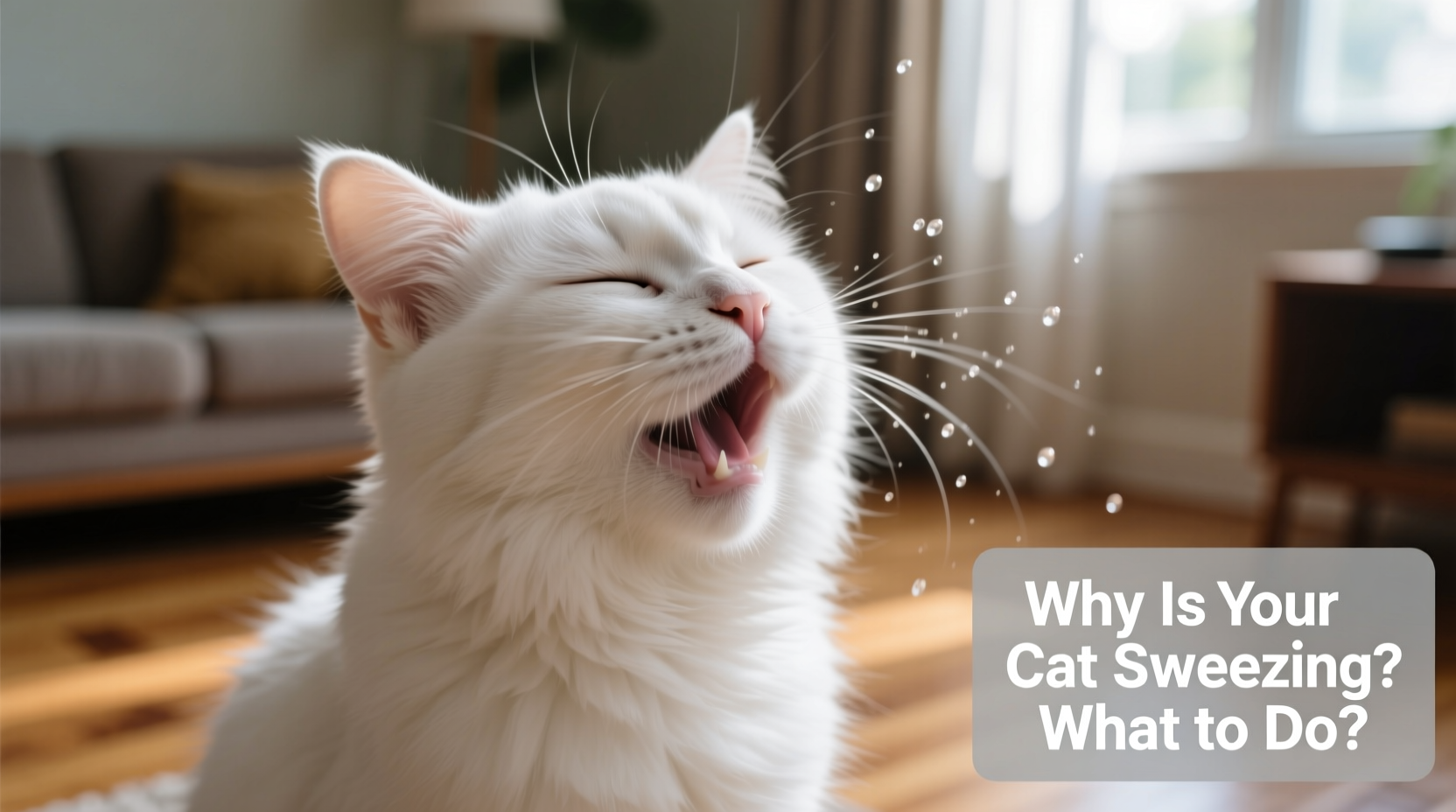Cat sneezing is something most owners encounter at least once. While occasional sneezing may be harmless, frequent or persistent episodes can signal an underlying health issue. Unlike humans, cats don’t typically sneeze due to colds in the same way, but they are susceptible to respiratory infections, allergens, and environmental irritants. Understanding the root cause is essential to determine whether home care is sufficient or if a veterinary visit is necessary.
Common Causes of Cat Sneezing

Sneezing in cats is a reflex designed to clear nasal passages of irritants or pathogens. It’s not a disease itself but a symptom of various conditions. The most frequent causes include:
- Viral infections: Feline herpesvirus (FHV) and feline calicivirus (FCV) are leading causes of upper respiratory infections (URIs), especially in multi-cat households or shelters.
- Bacterial infections: Secondary invaders like *Chlamydia felis* or *Bordetella bronchiseptica* often follow viral infections.
- Allergies: Pollen, dust, mold, cigarette smoke, or household cleaning products can trigger allergic reactions.
- Foreign bodies: Grass blades, dust, or small particles lodged in the nasal passage can provoke repeated sneezing.
- Dental issues: Tooth root abscesses, particularly in the upper jaw, can extend into the nasal cavity.
- Nasal polyps or tumors: Though less common, growths in the nasal tract can cause chronic sneezing, often with one-sided discharge.
When to Worry: Signs That Require Veterinary Care
Not every sneeze requires a trip to the vet, but certain accompanying symptoms indicate a more serious condition. Seek professional help if your cat exhibits any of the following:
- Persistent sneezing lasting more than 3–4 days
- Discharge from the nose or eyes (especially yellow, green, or bloody)
- Lethargy or decreased appetite
- Coughing, wheezing, or labored breathing
- Sneezing blood
- Swelling around the face or mouth
- Ulcers on the nose, lips, or tongue
“Recurrent sneezing with ocular or nasal discharge is often a sign of an active infection. Early intervention prevents complications like pneumonia or chronic sinusitis.” — Dr. Lena Torres, DVM, Feline Internal Medicine Specialist
Step-by-Step Guide: What to Do If Your Cat Is Sneezing
If your cat starts sneezing, take a systematic approach to assess and address the situation:
- Observe frequency and context: Note how often the sneezing occurs and whether it happens during specific activities (e.g., after cleaning, near litter boxes).
- Check for discharge: Clear mucus may suggest mild irritation; colored or thick discharge points to infection.
- Inspect the environment: Remove potential irritants like air fresheners, scented candles, or dusty bedding.
- Review recent changes: New food, litter, or household products could be triggers.
- Contact your veterinarian: If symptoms persist beyond 48 hours or worsen, schedule an exam. The vet may perform a physical check, take swabs, or recommend X-rays or blood tests.
Do’s and Don’ts When Managing a Sneezing Cat
| Do’s | Don’ts |
|---|---|
| Keep your cat hydrated and eating well | Administer human medications (e.g., decongestants) |
| Use a humidifier to moisten dry air | Ignore worsening symptoms like labored breathing |
| Clean nasal discharge gently with a warm, damp cloth | Force your cat if they resist handling |
| Isolate sick cats from others in multi-cat homes | Delay vet visits for persistent symptoms |
| Vaccinate regularly to prevent common viruses | Use strong chemical cleaners near your cat |
Real-Life Example: Bella’s Persistent Sneezing
Bella, a 3-year-old indoor tabby, began sneezing frequently after her owner started using a new pine-scented litter. At first, the sneezing was intermittent, but within a week, Bella developed watery eyes and stopped eating. Her owner switched back to unscented litter and wiped her face daily, but the symptoms persisted. A vet visit revealed mild conjunctivitis and a low-grade bacterial infection likely triggered by prolonged irritation. Bella was prescribed antibiotic eye drops and recovered fully within ten days. This case highlights how seemingly minor environmental changes can escalate if not addressed promptly.
Prevention Checklist: Reducing Cat Sneezing Risks
Proactive care significantly reduces the likelihood of recurrent sneezing. Follow this checklist to keep your cat healthy:
- ✔️ Keep vaccinations up to date (especially FVRCP for respiratory viruses)
- ✔️ Use dust-free, unscented cat litter
- ✔️ Avoid smoking indoors or using aerosol sprays
- ✔️ Clean food and water bowls daily
- ✔️ Schedule annual dental exams
- ✔️ Maintain good ventilation and use an air purifier if needed
- ✔️ Quarantine new cats for 7–10 days before introducing them to resident pets
Frequently Asked Questions
Can cats get colds like humans?
Cats don’t get the “common cold” virus that affects humans, but they do suffer from upper respiratory infections caused by feline-specific viruses like herpesvirus and calicivirus. These share similar symptoms—sneezing, runny nose, and lethargy—but are not transmissible to people.
Is it safe to wait a few days before seeing a vet?
Mild, isolated sneezing without other symptoms can be monitored for 2–3 days, especially if linked to dust or cleaning. However, if your cat stops eating, develops eye/nose discharge, or seems unwell, see a vet immediately. Kittens and senior cats are more vulnerable and should be seen sooner.
Can stress cause my cat to sneeze?
Stress doesn’t directly cause sneezing, but it weakens the immune system, which can reactivate latent viruses like feline herpesvirus. Events such as moving, introducing a new pet, or loud noises may trigger outbreaks in previously infected cats.
Conclusion: Act Early, Protect Long-Term Health
Sneezing in cats ranges from benign to potentially serious. By understanding the possible causes and recognizing warning signs, you can make informed decisions about care. Most cases of mild sneezing resolve with environmental adjustments, but persistent or severe symptoms demand veterinary evaluation. Early diagnosis prevents complications and supports faster recovery. Your cat relies on you to notice subtle changes—don’t hesitate to seek help when something feels off.









 浙公网安备
33010002000092号
浙公网安备
33010002000092号 浙B2-20120091-4
浙B2-20120091-4
Comments
No comments yet. Why don't you start the discussion?